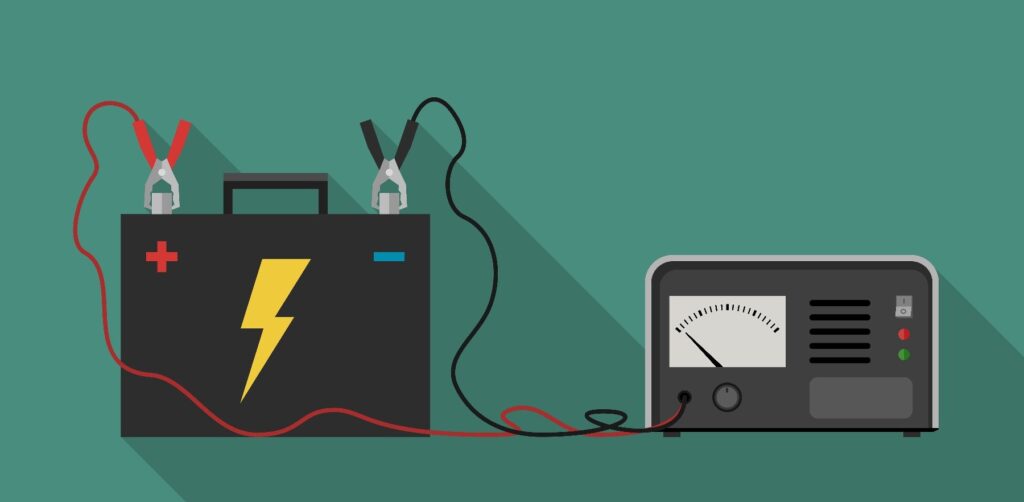Testing batteries, including maintenance-free lead-acid batteries used in solar panel systems, is crucial for ensuring their performance and identifying any issues early on.
- Visual Inspection: Start by visually inspecting the batteries for any signs of damage, leaks, or corrosion. Look for bulging cases, cracked terminals, or any other abnormalities.
- Voltage Test: Measure the voltage of each battery using a multimeter. Disconnect the batteries from the solar system and let them rest for a few hours to stabilize. Measure the voltage across the terminals. Compare the readings to the manufacturer’s specifications to determine the state of charge. Typically, a fully charged 12V battery should read around 12.6 to 12.8 volts.
- Load Test: Perform a load test to assess the battery’s capacity and ability to deliver power under load. Use a battery load tester or a resistor load bank to apply a controlled load to the battery while monitoring the voltage. Observe how the voltage responds under load and compare it to the expected behavior based on the battery’s specifications.
- Specific Gravity Test (for Flooded Lead-Acid Batteries): If you’re dealing with flooded lead-acid batteries (non-maintenance-free), you can perform a specific gravity test using a hydrometer. This test provides information about the electrolyte’s density, which correlates with the state of charge. Follow the manufacturer’s instructions for taking specific gravity readings.
- Internal Resistance Test: Use a battery impedance tester to measure the internal resistance of the battery. High internal resistance can indicate internal damage or deterioration and can affect the battery’s performance and efficiency.
- Temperature Test: Measure the battery’s temperature during charging and discharging. Elevated temperatures can indicate excessive charging or discharging currents, which can damage the battery over time.
- Capacity Test: Conduct a capacity test to determine the battery’s actual capacity compared to its rated capacity. Discharge the battery at a constant rate until it reaches a specified endpoint voltage, then measure the discharged capacity. Compare the result to the manufacturer’s rated capacity to assess the battery’s health.
- Hydrogen Gas Detection (for Flooded Batteries): If you’re dealing with flooded lead-acid batteries, use a hydrogen gas detector to check for the presence of hydrogen gas, which can accumulate during charging and pose a safety hazard.
- Record Keeping: Keep detailed records of all test results, including voltage readings, load test results, internal resistance values, and any other relevant data. This information can help track the battery’s performance over time and identify trends or potential issues.
- Interpretation and Action: Analyze the test results and compare them to the battery’s specifications and historical data. If any abnormalities or performance degradation is detected, take appropriate action, such as maintenance, repair, or replacement, to ensure the continued reliability of the battery bank.
By regularly testing and monitoring the batteries in your solar panel system, you can identify potential issues early and take proactive measures to maintain optimal performance and prolong battery life.


